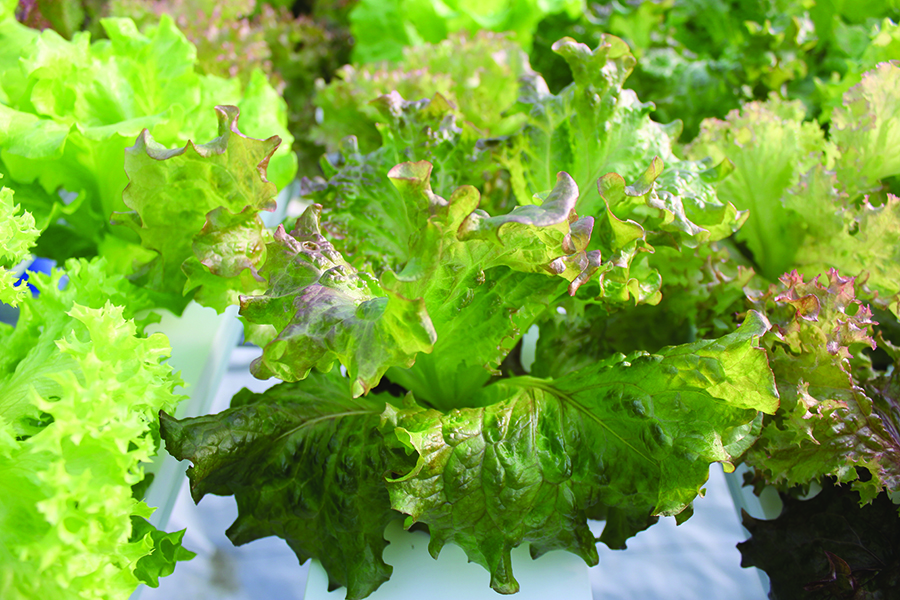Troubleshooting Fall Greenhouse Pests and Disease

One of the benefits to controlled environment growing is the ability to grow year-round if desired. While fall typically signals the end of a growing season for many field crop farms, backyard gardens and nurseries, many hydroponic farmers growing in a controlled environment are still going strong. These operations monitor the outdoor environment and adjust their growing environments accordingly to maintain optimal growing conditions with light, humidity, temperature, etc. Monitoring these elements can help to deter pests, diseases and physiological disorders, however there are also other considerations to keep pests and diseases from moving in.
Unwelcome Guests
Traditional farmers and gardeners with greenhouses may be tempted to protect prized plants from dropping temperatures by moving them inside, but it is not a good idea to move outdoor plants into environmentally controlled greenhouses due to the pests they may be harboring. If there is no alternative to safely store the plant during winter, make sure to thoroughly inspect anything that is being moved into the greenhouse with a hand lens in order to develop a management plan to deal with the potential pests. It is also a good idea to seal any holes or gaps that may be present in the glazing to prevent pests from seeking refuge in your greenhouse. This will greatly reduce the probability of introducing disease propagules that could affect your crops.
Know what you’re looking for
During the fall, be on the lookout for botrytis (aka “gray mold”), a disease that favors cool temperatures, periods of wetness, and can affect hundreds of different plant species. This disease is present year-round and is known to cause significant damage to greenhouse tomatoes. Botrytis typically enters the plant through wounds, so be sure to sanitize pruning tools. Good air circulation is key to reducing leaf wetness and disrupting infection of plant wounds. An effective fungicide for combating botrytis is BotryStop, which is an OMRI-listed organic spray that can be used right up until harvest.
Another disease to keep an eye out for is powdery mildew, which favors cool temperatures, high humidity, and low light levels. This disease is also present year-round, and can affect hundreds of different plant species, reducing yields of fruiting crops (cucumber in particular), and directly impacting the salability of lettuce. Powdery mildew normally infects healthy tissue when conditions are favorable, but unlike most diseases, it does not develop when there is free water present. Instead of keeping the plant tissue wet at all times, managing this disease requires good air circulation, proper greenhouse ventilation to reduce humidity, and appropriately labelled fungicides. Many growers have success using a tank mix of Cease and MilStop, Cease and OSO, and LifeGard as a stand-alone fungicide. Find these products here.
Although it is uncommon, verticillium wilt is another disease to keep in mind as the cool temperatures of fall set in. Verticillium infects the roots of the susceptible crop and spreads through the water. Once established, this disease is extremely difficult to eradicate. Managing this disease requires proper greenhouse sanitation, removal of plant debris, fresh growing media for each crop cycle, and certified disease-free seed and/or cuttings. The fungicides that have been studied and labelled for use are rarely effective against verticillium. No matter what disease you are battling, test fungicides at the lowest rate on the label on a sample of your crop before treating the entire population.
In order to achieve ideal crop growth in an environmentally controlled greenhouse, it is important to keep up with seasonal changes. Maintaining a consistent environment year-round means that the set points in an environmental controller should be adjusted with the seasons. No two seasons are alike and the same can be said for any two years. Collect data on your crop cycles, pest populations, diseases present, environmental patterns both indoors and outdoors, energy use, yields, etc. Consistent, useful data can lead to a thoughtful decision-making process to better maintain the environment, improve yields, and can ultimately increase business.
Greenhouse plant disease